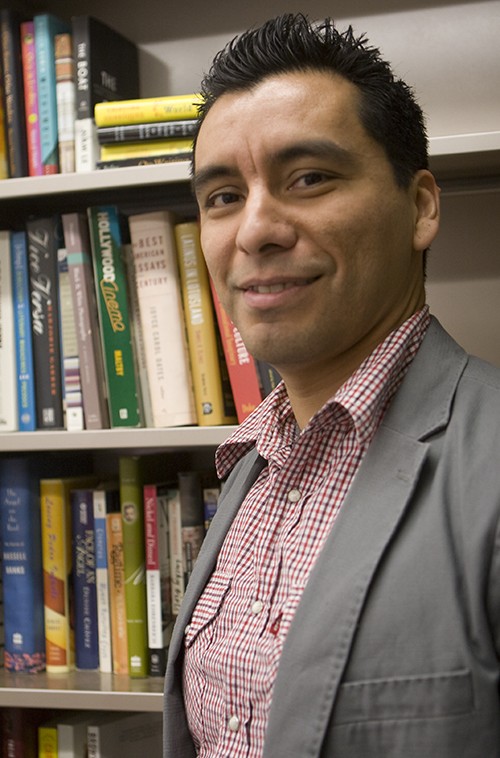In his debut novel, “”What You See in the Dark,”” assistant professor of creative writing Manuel Muñoz depicts the tragic death of a young woman against the backdrop of Alfred Hitchcock’s most iconic murder scene. The doomed last days of the young singer Teresa, the anguish of a small-town waitress named Arlene and the passion of “”the Actress”” collide with astounding narrative force. Powerful characterization propels the overlapping stories of three women across pages that fly by fast enough to leave you spellbound. Like Hitchcock before him, Muñoz knows a thing or two about gripping scenes.
Q: You’ve published two collections of short stories. What different challenges do you face, in terms of character development and pacing, when writing in a longer format?
A: It’s a scary proposition, because you have to get to the end of a draft before you know if you’ve taken any good steps. With a story you’ve got 20 pages; you know the scope. With a novel you could be on page 200 and be like “”I need to do this,”” that could take another 150 pages. I went through 5 drafts of this novel. I think I’m a short story writer by nature. The idea of sticking with a set of characters and circumstances for 5 years? It’s kinda nutty.
Q: What sort of research did you do when developing “”the Actress”” and “”the Director””? Were any of those quotes actual quotes from Alfred Hitchcock?
A: That’s all imagined. In the original drafts he was doing things as opposed to what I think serves in this novel as “”a way to think about film.”” I feel like what he says could possibly be true, as evidenced by watching his films. As far as research goes, I re-watched a lot of his films and got his style. With Hitchcock I go back on my undergraduate days, I think my senior year in 1994, where I watched 34 of his films. We watched almost all of them.
Q: In an interview about the novel, you mentioned “”something special occurs when we can apply our experience to art in order to understand it.”” How did you apply your experience living in the Central Valley to inform and understand the art you were setting there?
A: I want to get to a point where re-looking at a place eventually starts to show you facets you didn’t see before. I had to think a lot about what the Valley might have looked like in the ‘50s. What’s interesting about the place where I grew up, there are places from my childhood in the ‘70s and ‘80s that were clearly remnants from the ‘50s because things were developing so slowly. I didn’t have to use pictures or movies to find out what a Rexall drug store looked like. I had one in my town.
Q: Included in the title, the sublime of “”darkness”” is an element carried throughout the novel. What inspired you to craft a story around this theme?
A: If I stick to movies, the whole experience of stepping into a dark room in order to watch a movie is like going into your own mind to experience a book. It’s only you reading it, in silence. I don’t know why, but there’s something quite special like that and trying to link what that means. It sort of begs the question of whether or not a book fails you or you fail the book. Do you have the capacity to imagine what the book is suggesting? Versus a film where you have a static image; in a way, you can’t contest it. With a book, your comprehension comes into play.









